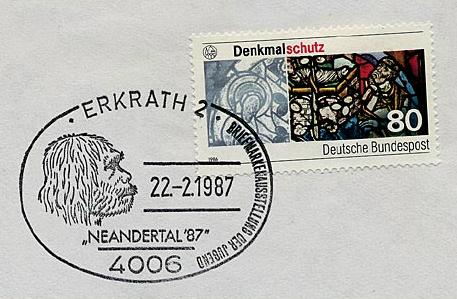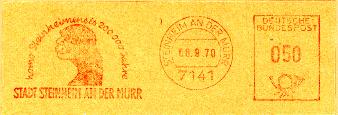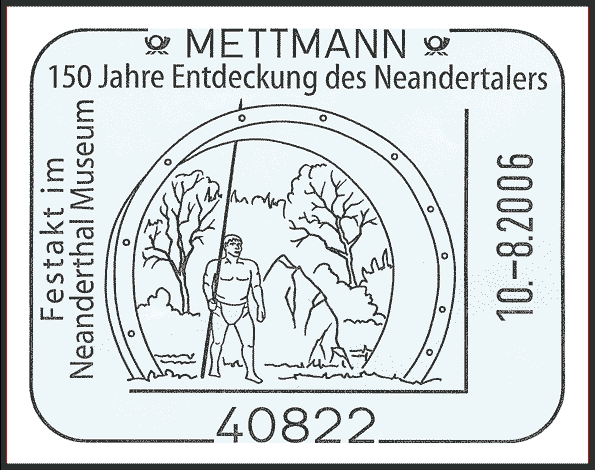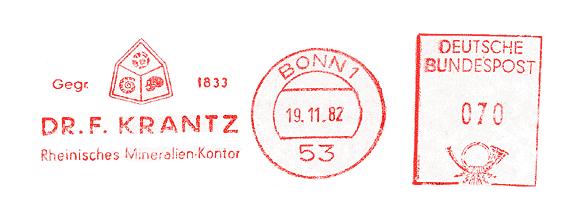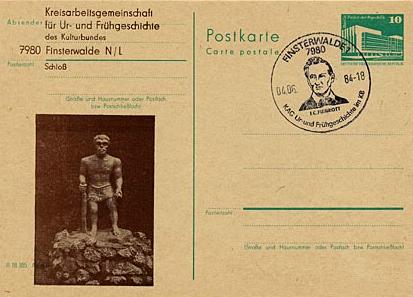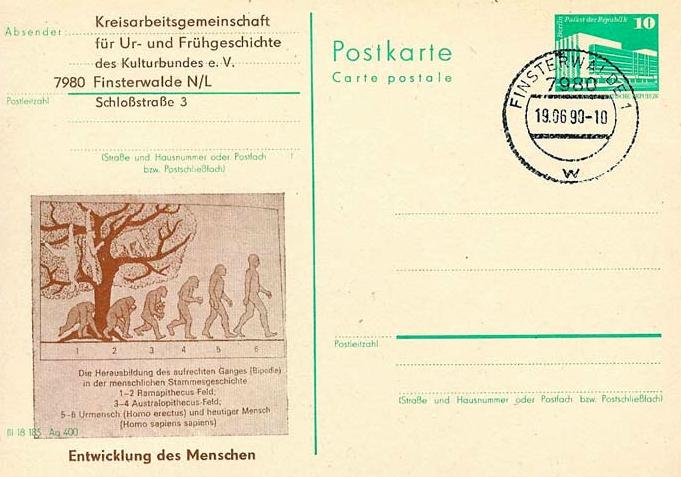![]()
GERMANY
Homo sapiens neanderthal
150th. Aniversary of the discovery of the Neanderthal Man
2006
Mi 2553
![]()
Figurative postmarks
«Erkrath»
« Steinheim an der Murr »
« Mettmann - Neanderthal Museum »
Johan Karl Fuhlrott (1803-1877)
After studying mathematics and natural sciences at the University in Bonn, Fuhlrott became a teacher at the Gymnasium in Elberfeld. In 1856, workers in a lime quarry in the nearby town of Mettmann showed him bones they had found in a cave and thought to belong to a bear. Fuhlrott identified them as human and thought them to be very old. He recognized them to be different from the usual bones of humans and showed them to the Professor of Anatomy at the University of Bonn, Hermann Schaffhausen. Together they announced the discovery publicly in 1857. In their view the bones represented the remnants of an ancient human race, different than contemporary humans.
Neanderthal man
Their views were not readily accepted as it contradicted literal interpretations of the Bible and Charles Darwin's work about evolution had not yet been published. Today, Fuhrott and Schaffhausen are regarded as the founders of paleoanthropology.
« Bonn 1»
Dr. Friedrich Krantz (1869-1926)
The mineral dealership of Dr. August Krantz (1809-1872) was founded in 1833 in Freiberg, Saxony. In 1837 the company moved to Berlin, and developed extensive connections to important scientists and collectors. During the following years Dr. Krantz expanded his business into many countries and continents.
![]()
POSTCARDS
Johan Karl Fuhlrott
school teacher and amateur naturalist,
They lived in Europe and Southwest Asia from about 150,000 years ago until 28,000 years ago. It is likely that the Neandertals evolved from earlier archaic Homo sapiens or Homo heidelbergensis in Southern Europe. Neandertal-like skull characteristics have been found in 300,000 year old fossils from Spain. The Neandertals adapted physically and culturally to the ice age conditions that prevailed during much of their time.
He recognized them as being human but somewhat different from those of modern Europeans. When several leading paleontologists and medical pathologists in Germany became aware of the fossils, a disagreement developed about who the "Neandertal Man" might have been. It was suggested that he had been an old Roman, a Dutchman, and even a Central Asian soldier in the service of the Russian Czar during the Napoleonic Wars of the early 19th century. The reality that these bones were from an earlier variety or species of human was not yet conceivable to most of the scientific world in the 1850's.
« Finsternwald 1 »
![]()
Letter
« 8420 Kelhelm 1 »

